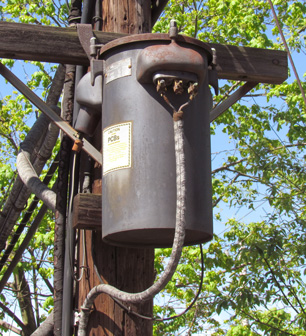Chlordane
| EPA Maximum Contaminant Level (MCL) |
0.002 mg/L |

Since 1988, chlordane use has been restricted to ant control in power transformers.
Chlordane is an insecticide that can be used to control a wide range of insects. It has been on the market since the 1940's, although its use is now restricted in the United States to fire ant control in power transformers (and no current products are registered for this use).
Chlordane moves about poorly in the environment, and is generally not expected to be found in water, but it can persist for years and bioaccumulate in exposed animals. Although it has no current use in the United States, it is still manufactured for use in other countries and can potentially arrive in drinking-water through industrial waste.
Health Effects of Chlordane
The World Health Organization reports that individuals unintentionally exposed to chlordane have experienced gastrointestinal problems and neurological symptoms (“headache, dizziness, vision problems, incoordination, irritability, excitability, weakness, muscle twitching and convulsions.”)
Long term exposure to chlordane may lead to cancer and liver problems, according to the EPA:
Some people who drink water containing chlordane well in excess of the maximum contaminant level (MCL) [0.002 milligrams per Liter] for many years could experience liver or nervous system problems; increased risk of cancer.
Although chlordane is a known animal carcinogen, a recent study by the International Agency for Research on Cancer concluded that there remains insufficient evidence as to its carcinogenicity in humans.
Water Treatment for Chlordane
The EPA recommends granular activated carbon (GAC) for the treatment of chlordane.
Sources:EPA, WHO, NPIC, Photo: WikiMedia, author: Sturmovik
Site Index
Filtration Systems
- Aeration for Iron & Sulfide
- Backwashing Filters
(whole house & well units)
- Chlorine & Chemical Injectors
- Countertop Water Filters
- Garden Hose Filters
- Reverse Osmosis, Residential
- Reverse Osmosis, Commercial
- Shower Filters
- Specialty Filters
- Ultraviolet Systems
- Undersink Filters
- Water Softeners
- Whole House Filters
Cartridges
Parts
- Replacement Parts
- Faucets
- Filter Media
- Fittings
- Housings
- O-rings
- Pumps
- Pura UV
- R.O. Parts
- R.O. Tanks
- R.O. Booster Pump
- VIQUA UV